
Perhaps you have taken Fido to the park and observed an odd behavior of him frantically rolling. You have probably received a good chuckle from this scene but may be wondering: Why do dogs roll in the grass?
Like humans, dogs come with their own unique behaviors. Rolling in the grass is an example of one of these behaviors that have caught every dog owner’s attention for some time now. Understanding why your dog does this can help you manage it better.
In this blog post, we will explore why some dogs love rolling in the grass. At the same time, we will also address training tips to redirect this behavior if you are looking to prevent your dogs from rolling in the grass.
What Does it Mean When a Dog Rolls in the Grass?
First, let’s understand the ‘why’s’ of grass rolling. There are several reasons why dogs roll in grass patches.
Getting a Much-Needed Massage and Tickle
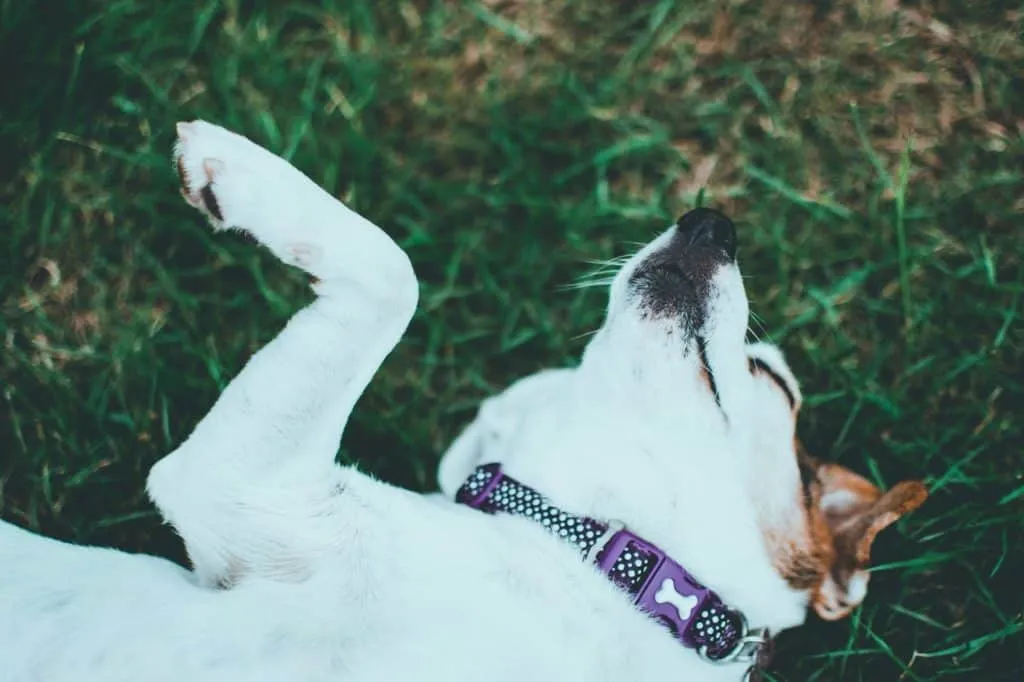
Little can compete with the apparent joy seen from dogs rolling around on their backs. There are a few theories as to why dogs roll around on their backs, such as to massage a hard-to-reach area.
Your canine companion feels good rolling on the grass to massage his back. When you see your pup with a happy expression on his face, it may be that the grass tickles him to death. Thus, he enjoys doing it again and again.
Take the Itch Off
Also, a dog rolls in the grass to relieve an itch that he can’t reach with his paws. Some dogs roll to relieve itchiness caused by flea and tick bites and skin allergies.
Just as with human beings, dogs find it hard to scratch their own backs. Hence, they resort to dog rolling.
Clean Up
Also, it can be a beneficial way to clean their dirty fur and body. The grass is mildly abrasive and functions as a comb to scratch out debris or dirt accumulated over time.
When a dog rolls on its back, the movement loosens up debris within its coat for a deeper clean.
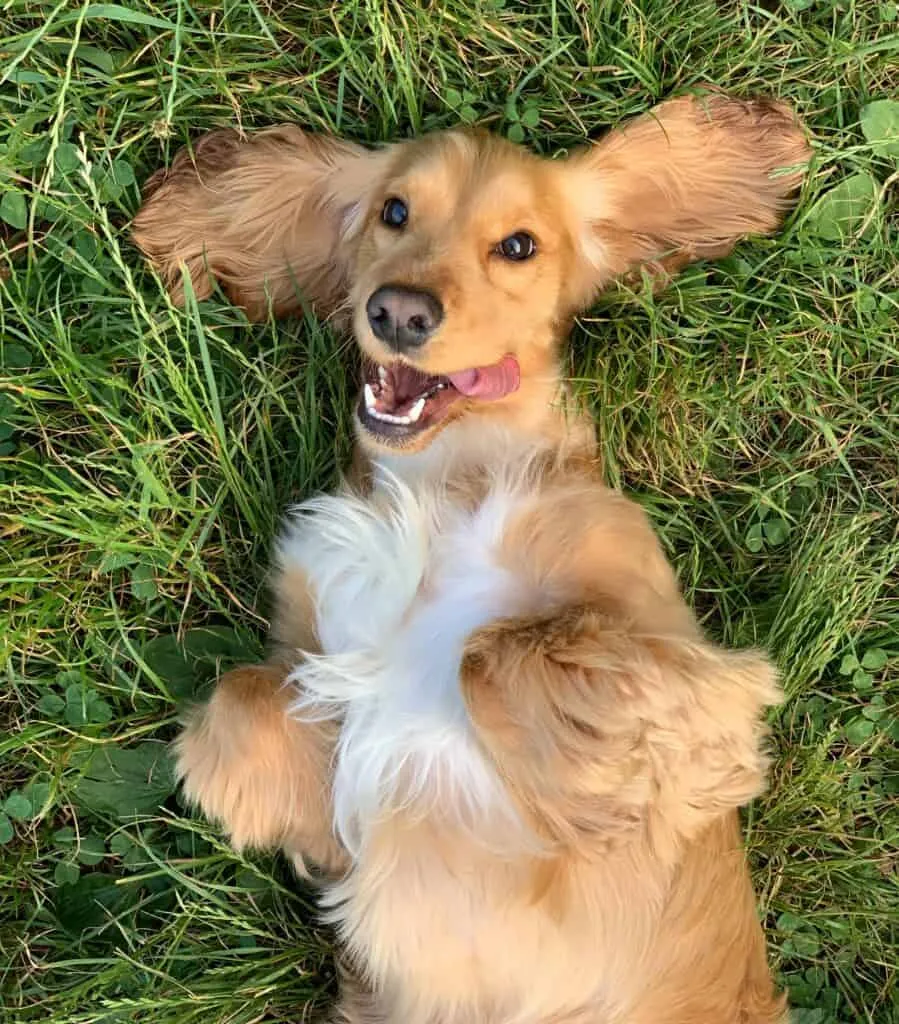
Means of Survival
Another theory to this dog behavior of rolling in the grass could predate self-sufficient days as a means of survival. Some dogs find the smell of grass appropriate to cover their own scent, as many predators do.
Predatory species (a wolf, for instance) commonly disguise their scents by rolling in strong odors. This behavior allows them to get closer to their prey and increases their chances of success. Wild dogs were thought to have done this to gather food for themselves.
Smell the Way they Want to
Fido may be rolling to eliminate an odor that he doesn’t like. When our pet smells something not to his liking, he would want to rub it off. He would want to eliminate a previous odor from canine cologne or doggy shampoo that does not suit them.
A roll on the ground and lying in the grass rub off some of that undesirable smell from their bodies.
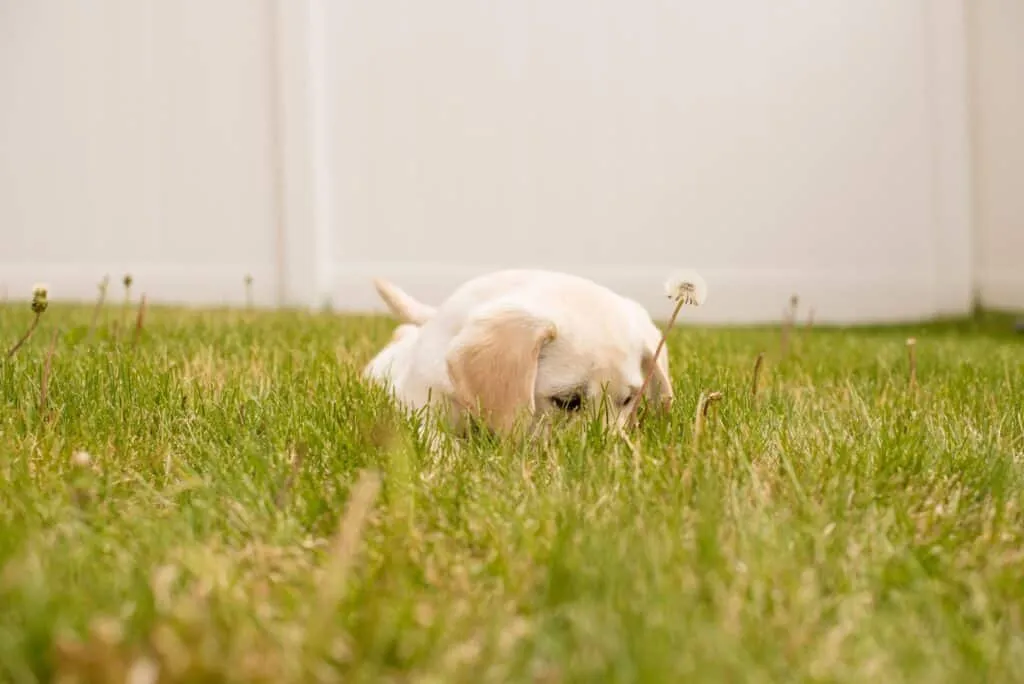
Scent Marking
Rolling in the grass could evolve from prehistoric times when wolves had to and still do disguise their scents to get closer to their prey. The stinkier the grass, the stinkier the canine, and the more chance he had to not smell like a predator in order to get closer to dinner.
When your dog smells a spot in the grass and rolls over it, he could be scent marking. He is setting out a warning to other dogs that that spot belongs to him.
Just as humans are particular about certain scents, the same may go for our pets. It is possible that some dogs are attracted to certain smells, and they cannot help but cover their entire bodies in them!
How do I Keep my Dog from Rolling in the Grass?
Fortunately, dogs can be trained or otherwise discouraged to avoid rolling in the grass if you dislike this behavior.
Recall Off-Leash
Keep your dog on a long leash at all times. This is important to maintain control and prevent unwanted behaviors before they happen, which will alleviate the learning process for both you and your pooch.
Walk with your furry friend around the park, and when you notice he is sniffing one spot for too long or maybe displaying some pre-roll behaviors such as pawing or kneeling, immediately interrupt him to come to you.
As soon as he obeys, reward him with a training treat and a well-deserved pat. This will also strengthen your recall, which is always a great tool to have!
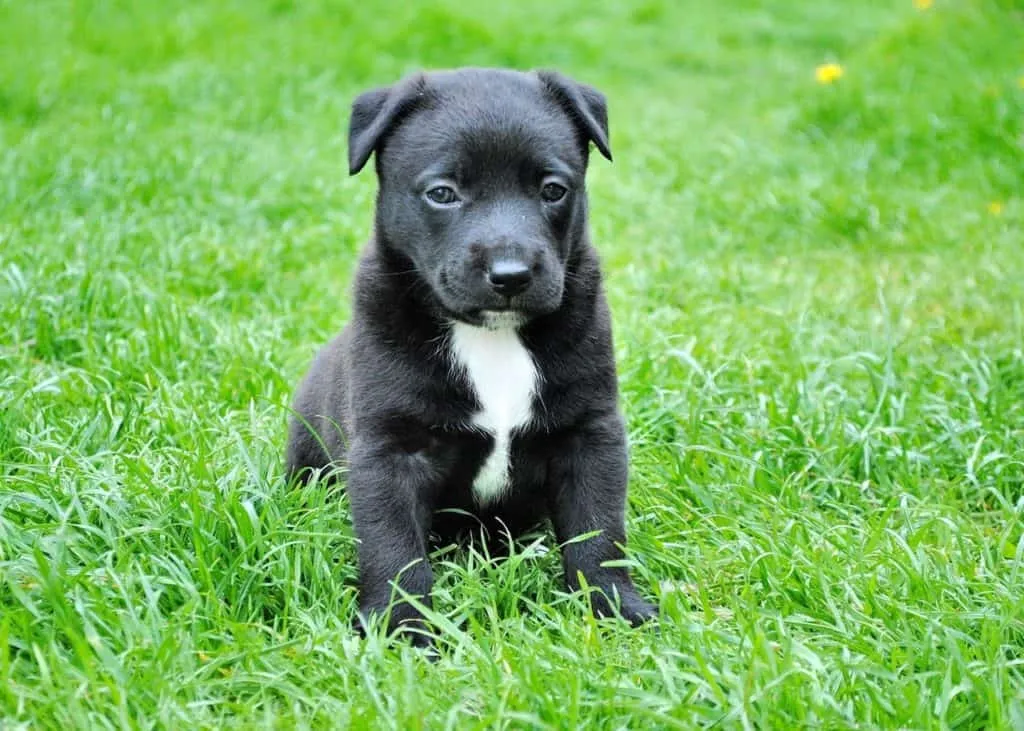
The Shaker
Firstly, stock up on treats, and an old aluminum can be filled with rocks or coins. We will call this the “shaker.”
After you feel good with your recall off-leash, keep the shaker handy. Start familiarizing your dog with “No” in collaboration with the shaker. When your pet goes to roll, shake or drop the shaker in front of him and say, “No!” The noise will interrupt his rolling and likely put an abrupt end to it. When he stands, reward him with a treat.
It is important to remain consistent in all training, such as with the shaker and with recall. Use the shaker to disturb your pooch whenever he does something you dislike. And, of course, remember that positive reinforcement always helps.
Keep Them Busy
Dog toys are helpful in distracting your pet from this obsessive behavior. Other distractions also inhibit your dogs from taking a roll in the grass.
Keep your dog busy playing fetch or frisbee. A game of tug-of-war or chase would keep your pup entertained and distracted. It might also help to use a fragrance-free dog shampoo if he is rolling to replace an unwanted scent.
While most dogs roll in grass patches occasionally, there are some who exhibit extreme rolling and rubbing habits for reasons we cannot fathom. A visit to the veterinarian would help, as a dog’s behavior may sometimes be caused by some underlying conditions.
For extreme rolling behavior, dog trainers are there to help.

Should I Let my Dog Roll in the Grass?
While scent-rolling would not normally pose a threat, keep your pet up to date with flea and tick treatments. If your dog has never exhibited signs of allergies or skin irritations, it is safe to let your dog roll in the grass.
It is recommended to visually scan for hazards such as broken glass or residues from other animals (another dog’s poop). Of course, bear in mind that treatments such as herbicides or pesticides could pose a reaction upon contact with your dog’s skin. A post-roll rinse is recommended to keep your dog’s coat clean and comfortable afterward.
Allergies
It is not uncommon to see dogs rolling in the grass around particular times of year- spring and autumn. Like us, dogs can experience allergies to many different stimuli, such as pollen, grass, and even dietary elements.
If you observe your dog rolling more often or more aggressively, take Fido to the vet for a checkup. Sometimes, a simple diet change can do the trick, or even a special shampoo can help alleviate your dog’s itching. Dog vitamins for skin allergies may also be recommended. A veterinarian can ensure what is best for our pups to stay healthy.
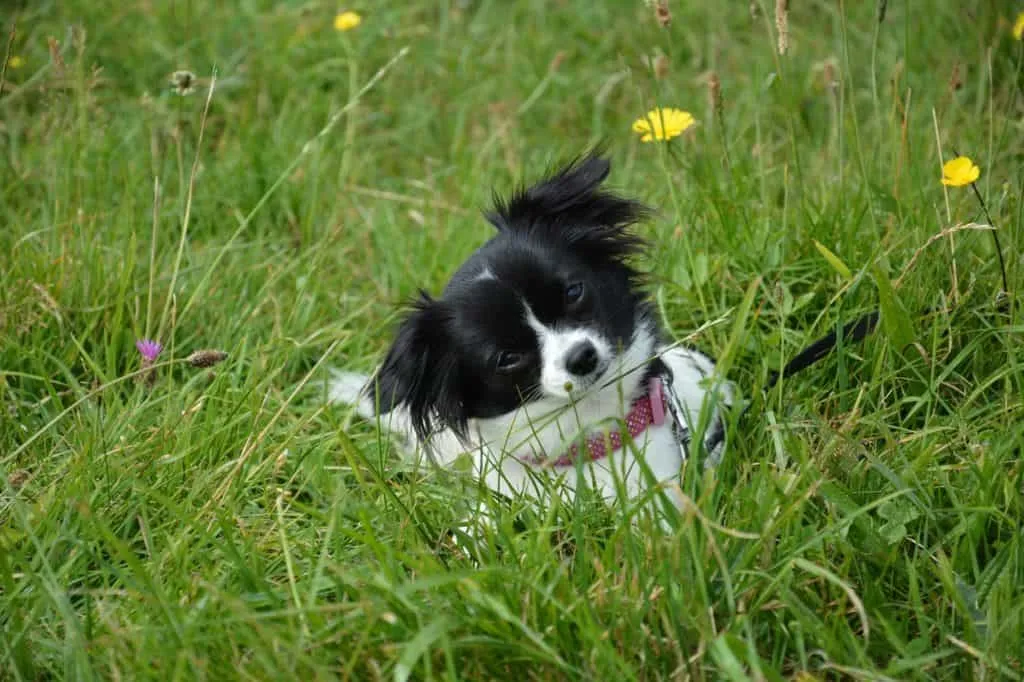
Scent Marking
As we know, dogs can be very territorial over their turf, and scent marking is a way to communicate in the olfactory world that their grass is occupied.
If you frequent high-traffic dog areas such as dog parks, this behavior may be a way for your dog to communicate and even share information with other pups.
Either way, if this behavior is unpleasant for you, a quick rinse from the yard or the park is recommended to keep both of you feeling good.
Check the Area
When your dog simply loves an occasional tumble in the grass, always ensure that the patches of green are clean.
Check for dog poop (known worm carriers), leftover foods (eating them can cause an upset stomach), broken wood and glass (could pierce your dog’s skin and cause injury), and anything else that can harm your pooch.
There may be other reasons why your dog loves the grass, such as an underlying medical condition. But, in most instances, this is seldom the case.
For extreme rolling that you might consider a behavioral problem or a symptom of a medical condition, visit a vet or a pet behavior specialist for expert advice. Otherwise, your dog may just be having fun!
Is your dog eating grass? Check out our blog post here and how to stop this behavior!